Streets of Old Milwaukee Made New
Public Museum has redone the 50-year-old exhibit, adding more sights and sounds and smells.
Wednesday, December 2nd: a day after announcing his bid for a fourth term, Mayor Tom Barrett trod the granite block pavement of Buffalo Street, heading toward the new streetcar maintenance facility downtown.
After the mayor passed Mader’s and Usinger’s, this reporter caught up with him outside of Miss Kitty’s whorehouse on River Street.
“Did I leave my hat there?” the mayor wondered.
The mayor had come to this unsavory corner of downtown after alighting from a streetcar, and catching a quick show at a newly refurbished Nickelodeon that hadn’t shown movies in years.
This trip through time, for that is what it was, took place at the Streets of Old Milwaukee, a popular exhibit of the Milwaukee Public Museum that had had its debut 50 years ago. After a months-long refurbishing, the exhibit is set to reopen to the public on December 11th.
The mayor and others were here for a sneak peek media preview of the streets, led by Julian Jackson, Director of Exhibits and Graphics; Al Muchka, Curator of History Collections and Senior Collections Manger; and Dennis Kois, President and CEO.
All three had starred in the video the mayor and others had watched in the antique cinema. They explained the changes that were made to the old exhibit, which features scale reproductions of 19th century Milwaukee homes or places of business. (In the case of Madame Kitty Williams, the building was both.)
When the exhibit closed in August, museum management promised the retooling would provide “a heightened sensory experience including new soundscapes, ‘secrets’ to discover, sights and even smells, as well as the integration of cutting-edge technology to engage audiences.”
Those “secrets” include Abby the cat. The museum’s technology causes a sensor to be triggered when a passerby is near the feline. The “meow” gets your attention, and museum staff hope folks take the time to photograph the feline once it is discovered. “The eyes shine, just like a live cat’s,” visitors were told.
This was honest-to-goodness wine and beer, spilled over the course of a number of celebrations held in the streets over the years. It is a popular fundraising venue, available for rent.
One of the biggest enhancements to the museum-going experience will be a Streets of Old Milwaukee app that will be ready by the exhibit’s public opening. The app will know where you are in the exhibit, and will respond with appropriate informational snippets.
As is the case with many other museums, kiosks and explanatory signs have been minimized. Current best practices dictate that objects should be able to be interpreted on their own merits by the observer. This spares the museum-goer the burden of translating Art History Talk into understandable English.
The app will be updated and reprogrammed several times a year to focus on certain themes and collection highlights, attendees were promised. The headlines on the newspapers will change, as will the shows in the Nickelodeon (which in the past was lacking in reality, and didn’t show any movies). This should help to keep the visitor experience “fresh,” which is another big interest among museum administrators these days.
Lighting on the street is muted, with the stars coming out and a full moon rising on a dead end near the locksmith’s shop and a stained glass studio. Visual conditions are less than ideal for those suffering from Presbyopia, which includes everybody who, like the exhibit, is over 50.
Many of the displays include old printed material from flyers and boxes, which can be hard to read in the dim light, which is still probably far brighter than the candlelight and lamplight of the era depicted. I gave up trying to find the Cannabis Sativa jar in the drug store, but it’s got to be right there with the Brain Salt and the Wizard Oil.
A few displays, like a crate of olives in the storefront of Roundy’s, included new and reproduced materials where originals should have been readily available, or reasonable substitutes easily found.
The General Store, which is well appointed, includes many small items of interest. For the first time, visitors can enter the store to get a better look at the items, displayed behind glass in a nearly invisible enclosure.
The candy store sells lots of tasty treats, as well as a streetcar-themed holiday ornament, and other streetcar items. With luck Republican legislators won’t threaten to cut off funding for this streetcar.
Major sponsorship of the exhibition was made by the Rexnord Corporation, a descendant of Rex Chainbelt, Nordberg and Falk. The streetcar bears the Rexnord name, which is quite an anachronism, we must note, since the firm did not adopt that name until 1973. A new building houses a Falk factory.
Bliffert Lumber company donated the lovely yellow pine interior of its old North Side Lumber Company office building, still located on E. Chambers St.
Other corporate sponsors include: Balistreri Owned & Operated Sendik’s Food Markets; Badger Meter; We Energies Foundation, represented as The Milwaukee Gaslight Company; Lynn Chappy; and The Stackner Family Foundation.
Finally, A Bicycle!
The exhibit, for the first time, includes a bicycle. This had been a serious omission, since bicycles were all the rage during the time period depicted in the exhibit. Milwaukee was a major center of bicycle and bicycle component manufacturing in the late 1800’s.
A.O.Smith Co., which has contributed to the museum since 1947, was the first firm to manufacture hollow steel tubing, which has been an essential of bicycle manufacturing ever since. The Milwaukee firm was once the world’s largest manufacturer of bicycle parts.
The velocipede displayed here is a “Penny Farthing” high-wheel bike that was soon to be rendered obsolete by the manufacture of the “Safety Bicycle,” with its two equal sized wheels.
Visitors are able to get on the stationary machine for a pedal. The bike is a reproduction, but the museum’s collection of genuine 19th century bicycles, which is judged to be among the finest in the nation, remains in the basement unseen by the public since before the Streets of Old Milwaukee had its debut a half-century ago.
Kois said the bicycles would require a good deal of conservation to be exhibited, although some may disagree on the extent of work required.
But as the museum enters a new era and reaches out to new people on its old streets, perhaps a cycling exhibit may some day prove as popular and as venerable as the Streets of Old Milwaukee has become.
For further information on the Milwaukee Public Museum’s bicycle collection, see Michael Horne: “The Greatest Exhibit You’ve Never Seen,” Milwaukee Magazine, July, 2011.
Photo Gallery
Plenty of Horne
-
Milwaukee Modernism Gains National Awards
 Dec 15th, 2025 by Michael Horne
Dec 15th, 2025 by Michael Horne
-
New Rainbow Crosswalks Mark Milwaukee’s LGBTQ+ History
 Oct 8th, 2025 by Michael Horne
Oct 8th, 2025 by Michael Horne
-
Welcome Back, Tripoli Country Club!
 May 27th, 2025 by Michael Horne
May 27th, 2025 by Michael Horne


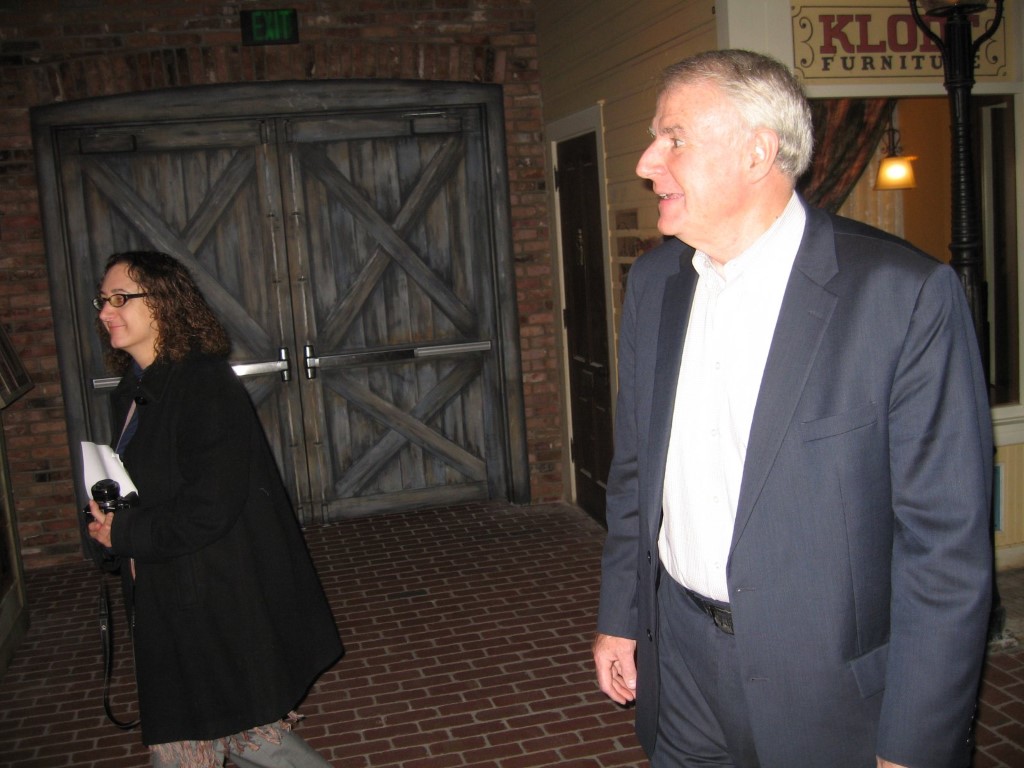
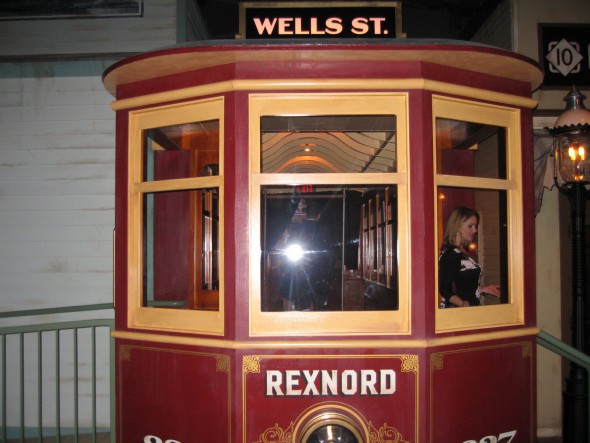

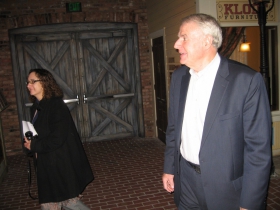
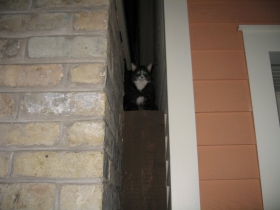
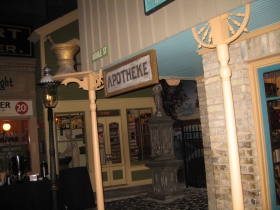
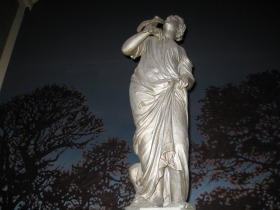
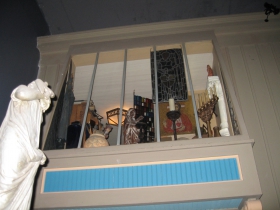


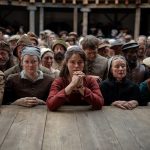

















Can’t wait to see the “new” streets of Old Milwaukee! Thanks for the article, Michael Horne!
I hope Old World Third holds on to its historical vestiges or this exhibit will serve that function. Thank God Usinger’s will probably be there forever–and maybe Mader’s.
This exhibit sounds impressive–a good to way to spruce up a beloved classic.